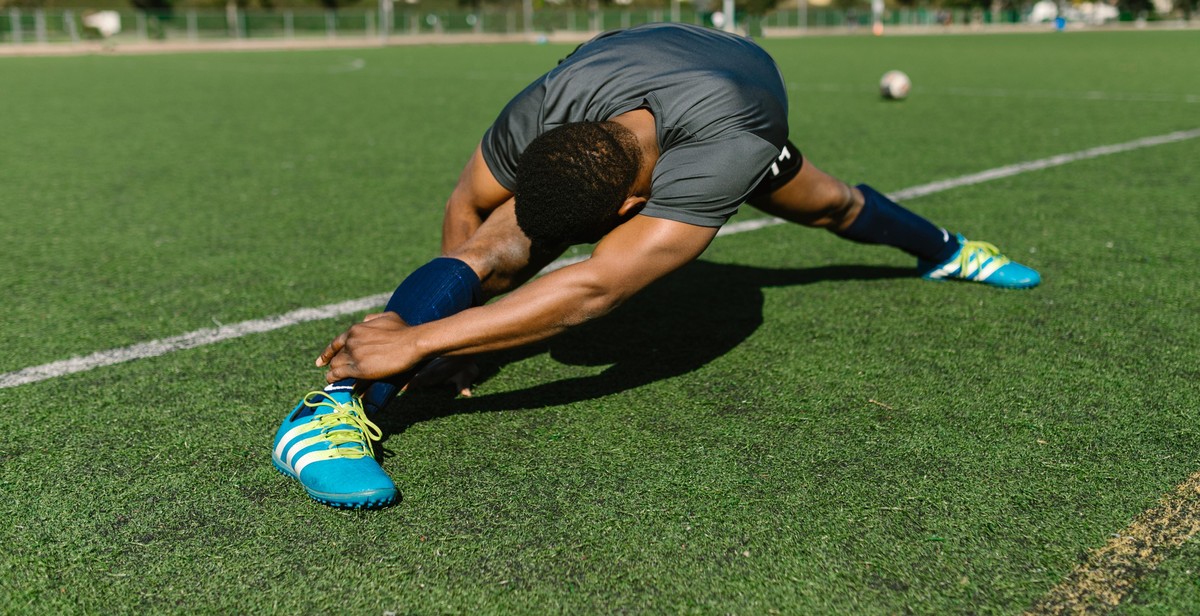How to Prevent Common Soccer Injuries: Injury Prevention Strategies for Players
As a professional soccer player with over 10 years of experience, I’ve seen my fair share of injuries on the field. From sprained ankles to torn ACLs, soccer players are susceptible to a variety of injuries. However, with the right injury prevention strategies, players can greatly reduce their risk of getting hurt.
Why Injury Prevention is Important for Soccer Players
Soccer is a high-intensity sport that requires quick movements, sudden stops, and constant change of direction. This puts a lot of stress on the body and can lead to injuries if players aren’t careful. Injuries not only affect a player’s physical health but can also impact their mental well-being and ability to perform on the field.
Common Soccer Injuries
Some of the most common soccer injuries include:
- Ankle sprains
- Knee injuries (ACL, MCL, meniscus tears)
- Hamstring strains
- Groin pulls
- Concussions
Injury Prevention Strategies
Fortunately, there are several injury prevention strategies that soccer players can use to reduce their risk of getting hurt. These include:
- Proper warm-up and cool-down routines
- Stretching before and after games and practices
- Wearing proper protective gear, such as shin guards
- Strengthening and conditioning exercises for the lower body
- Using proper technique when kicking and tackling
By implementing these injury prevention strategies, soccer players can stay healthy and perform at their best on the field.

Importance of Injury Prevention in Soccer
As a soccer player for over 15 years, I have experienced my fair share of injuries. From sprained ankles to torn muscles, these injuries not only caused physical pain but also affected my performance on the field. It wasn’t until I started prioritizing injury prevention strategies that I was able to improve my overall health and avoid future injuries.
Statistics on Soccer Injuries
According to a study conducted by the American Academy of Pediatrics, soccer is one of the most injury-prone sports, with an estimated 2.36 million soccer-related injuries occurring annually. The most common injuries include ankle sprains, knee injuries, and concussions. These injuries not only affect players’ performance but can also have long-term effects on their physical and mental health.
The Importance of Injury Prevention
Preventing injuries should be a top priority for all soccer players. Not only can injuries affect a player’s performance on the field, but they can also lead to long-term health problems. By incorporating injury prevention strategies into their routine, players can reduce their risk of injury and improve their overall health.
- Proper Warm-Up: A proper warm-up is essential for preventing injuries. It increases blood flow to the muscles and prepares them for physical activity. Players should spend at least 10-15 minutes warming up before every game or practice.
- Stretching: Stretching is another important injury prevention strategy. By stretching regularly, players can improve their flexibility and reduce their risk of muscle strains and tears.
- Proper Technique: Proper technique is essential for preventing injuries. Players should focus on using proper form when executing moves and avoid overexerting themselves.
- Rest and Recovery: Rest and recovery are just as important as physical activity. Players should take breaks when needed and allow their bodies time to recover after games and practices.
| Injury Prevention Strategies | Benefits |
|---|---|
| Proper Warm-Up | Increases blood flow to muscles and prepares them for physical activity |
| Stretching | Improves flexibility and reduces risk of muscle strains and tears |
| Proper Technique | Reduces risk of injury by using proper form and avoiding overexertion |
| Rest and Recovery | Allows the body time to recover after games and practices |
By incorporating these injury prevention strategies into their routine, soccer players can reduce their risk of injury and improve their overall health and performance on the field. It’s important for players to prioritize their health and take the necessary measures to prevent injuries.

Common Soccer Injuries
Soccer is a high-intensity sport that requires players to be in top physical condition. Unfortunately, injuries are a common occurrence in soccer, and they can range from mild to severe. Here are some of the most common soccer injuries:
Ankle Sprains
Ankle sprains are one of the most common soccer injuries. They occur when the ligaments that support the ankle are stretched or torn. Ankle sprains can range from mild to severe, and they can take anywhere from a few days to several weeks to heal.
Players can reduce their risk of ankle sprains by wearing properly fitting shoes with good ankle support. Strengthening exercises can also help prevent ankle sprains.
Knee Injuries
Knee injuries are another common soccer injury. They can range from minor sprains to torn ligaments and cartilage. Knee injuries can be caused by sudden twists or turns, or by direct impact.
To prevent knee injuries, players should focus on strengthening their quadriceps and hamstrings. Wearing knee braces can also provide additional support and protection.
Hamstring Strains
Hamstring strains occur when the muscles at the back of the thigh are stretched or torn. They can be caused by sudden acceleration or deceleration, or by overuse.
Players can prevent hamstring strains by warming up properly before games and practices, and by stretching regularly. Strengthening exercises can also help prevent hamstring strains.
Concussions
Concussions are a serious injury that can occur in soccer. They are caused by a blow to the head, and they can result in a range of symptoms, including headache, dizziness, and confusion.
To prevent concussions, players should wear properly fitting helmets and avoid using their head to hit the ball. If a player does experience a blow to the head, they should be evaluated by a medical professional before returning to play.
| Injury | Cause | Prevention |
|---|---|---|
| Ankle Sprains | Stretched or torn ankle ligaments | Wear properly fitting shoes with good ankle support, do strengthening exercises |
| Knee Injuries | Sudden twists or turns, direct impact | Strengthen quadriceps and hamstrings, wear knee braces |
| Hamstring Strains | Stretched or torn hamstring muscles | Warm up properly, stretch regularly, do strengthening exercises |
| Concussions | Blow to the head | Wear properly fitting helmets, avoid using head to hit ball, seek medical evaluation if necessary |

Injury Prevention Strategies
As a seasoned soccer player, I have experienced my fair share of injuries. However, I have also learned effective strategies to prevent them. Below are some injury prevention techniques that every soccer player should consider:
Proper Warm-Up and Cool-Down
Before any soccer game or practice, it is crucial to warm up properly. A warm-up prepares your body for the physical demands of the sport, increases blood flow to the muscles, and helps prevent injury. A proper warm-up should include light jogging, dynamic stretching, and some sport-specific movements.
Similarly, cooling down after a game or practice can help reduce muscle soreness and prevent injury. A cool-down should include light jogging, static stretching, and foam rolling.
Stretching and Flexibility Exercises
Stretching and flexibility exercises can improve range of motion, reduce muscle tension, and prevent injury. It is important to stretch all major muscle groups, including the hamstrings, quads, calves, and hip flexors. Stretching should be done after a proper warm-up or at the end of a game or practice.
Yoga is also an excellent way to improve flexibility and prevent injury. Incorporating yoga into your training routine can help improve balance, stability, and overall body awareness.
Strength Training
Strength training can improve muscle strength, endurance, and power, reducing the risk of injury. It is important to focus on all major muscle groups, including the core, lower body, and upper body. Exercises such as squats, lunges, deadlifts, and push-ups can help improve your overall strength and reduce the risk of injury.
Proper Nutrition
Eating a healthy, balanced diet can help improve performance and reduce the risk of injury. Proper nutrition can help provide the energy and nutrients your body needs to perform at its best. It is important to consume a variety of nutrient-dense foods, including whole grains, lean protein, fruits, and vegetables.
In conclusion, incorporating these injury prevention strategies into your soccer training routine can help reduce the risk of injury and improve overall performance. Remember to always warm up properly, stretch, focus on strength training, and maintain a healthy diet.

Conclusion
As a professional soccer player with over a decade of experience, I can attest to the importance of injury prevention strategies. Preventing injuries is not only crucial for your performance on the field, but also for your long-term health and well-being.
Key Takeaways
- Proper warm-up and cool-down routines can greatly reduce the risk of injury.
- Consistent stretching and strengthening exercises can help prevent muscle strains and tears.
- Wearing appropriate gear, such as shin guards and cleats, can protect you from impact injuries.
- Following proper technique and playing within your limits can prevent overuse injuries.
Final Thoughts
Remember, soccer is a physical sport and injuries can happen. However, by implementing these injury prevention strategies, you can greatly reduce your risk of getting injured. It’s important to prioritize your health and well-being, both on and off the field.
As a content creator, I am passionate about sharing my experiences and knowledge with others. If you have any questions or concerns about injury prevention strategies for soccer players, feel free to reach out to me. Let’s work together to keep soccer players healthy and injury-free!
